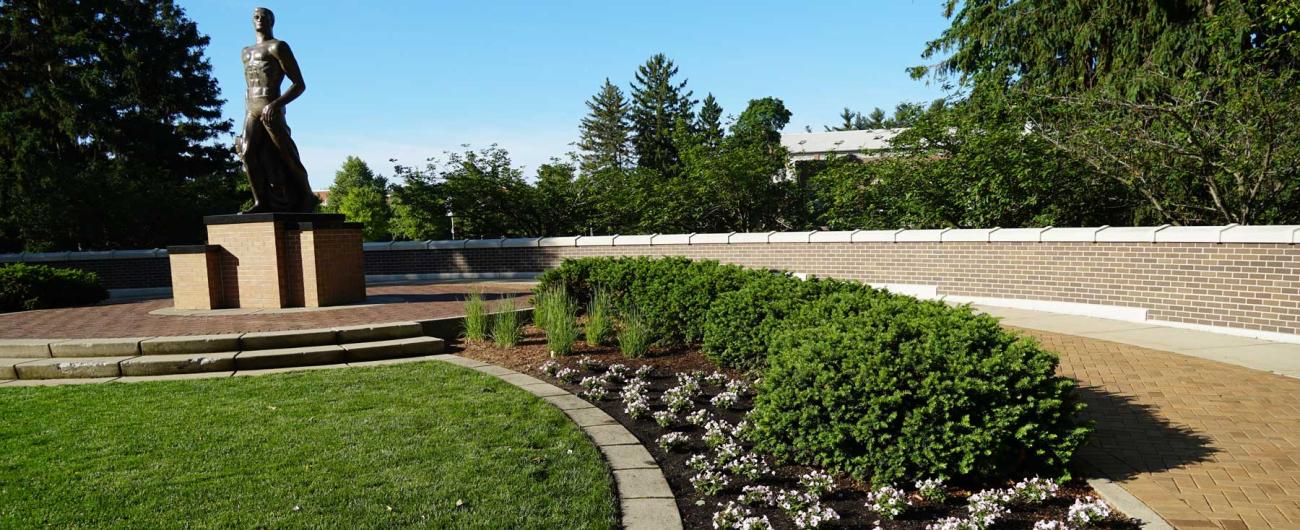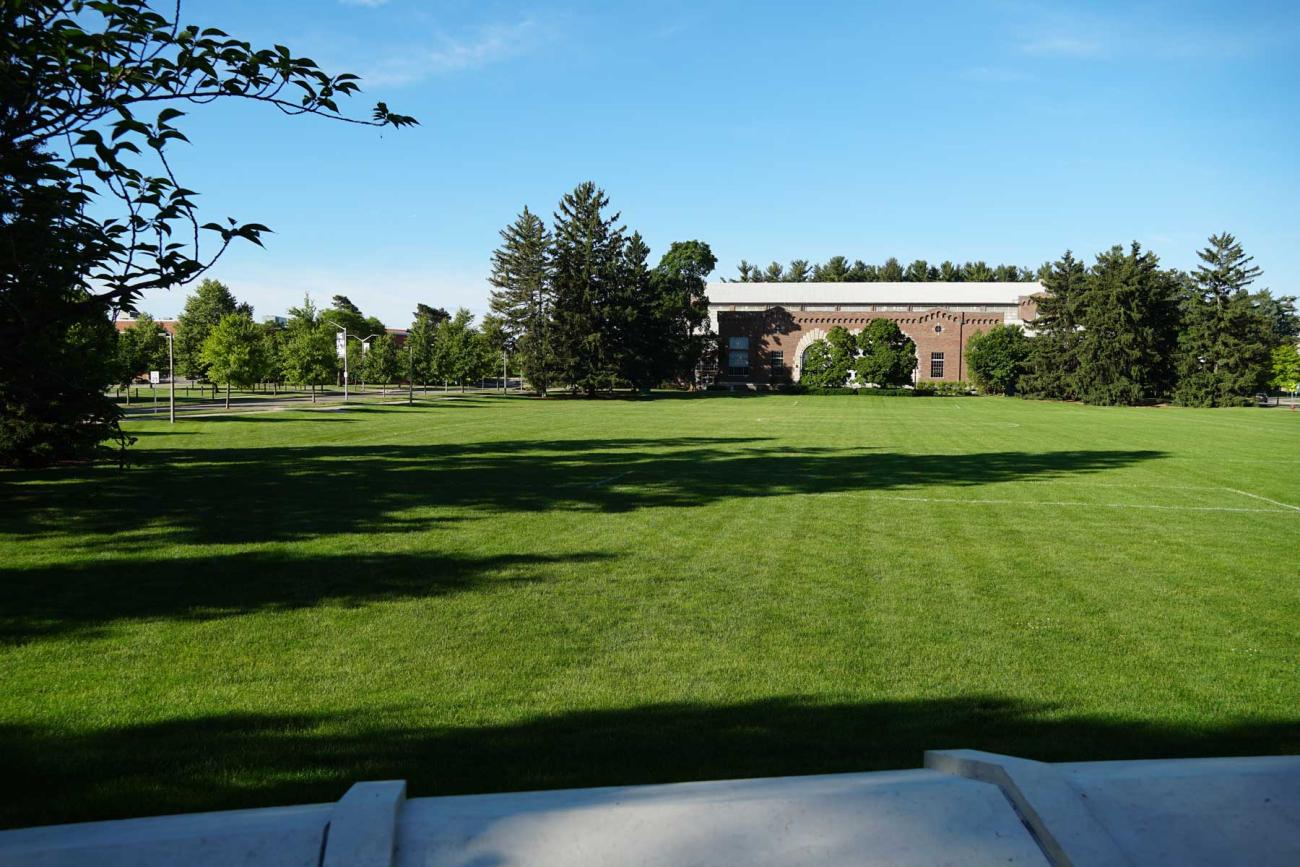Finding sustainable landscape solutions at MSU

July 18, 2025
As part of ongoing campus sustainability initiatives, Michigan State University (MSU) is working to reduce grass mowing on its East Lansing campus. This has multiple potential benefits: protecting the Grand River watershed, reducing maintenance costs, supporting pollinators and other beneficial insects, and increasing the visual appeal of campus.
Each year, MSU spends thousands of dollars mowing and maintaining 400 acres of grass lawns. These spaces provide space for students to gather and lounge, for fans to tailgate during home football games, and more. Mowing efforts exercised on campus are continuously reviewed and refined to increase efficiency while still meeting the Campus Master Plan standards and providing the MSU community with the highest-level landscape quality possible.
However, there are green spaces on campus that could be repurposed in different, more sustainable ways.
Alternative green space solutions such as rain gardens, natural areas, and pollinator corridors are options, but the initial cost of establishment has historically been higher than that of traditional mowing. However, MSU’s Infrastructure Planning and Facilities (IPF) has come up with a hybrid, collaborative solution. “We worked with the MSU Campus Landscape Stewardship Committee to come up with a new gameplan,” says Matt Bailey, Landscape Services manager for IPF.
This new plan will roll out in phases, beginning in the summer of 2025:
- Reallocating one year of maintenance funds to the purchase of seed, plugs, and labor hours to install 21 acres of native/pollinator gardens.
- working with campus partners and student groups to turn areas of turf into no-mow/pollinator areas;
- adding clumps of plugs to areas that are highly visible for quicker establishment;
- keeping areas mowed at highest brush hog setting to help prevent the shading out of new seedlings;
- periodic area walks to remove unwanted species;
- hand harvesting any emerged plant seeds in the fall, and using a brush hog at the end of the season;
- and propagating purchased and harvested seeds in greenhouses for planting in the spring.

The MSU Campus Landscape Stewardship Committee along with IPF Landscape Services has also identified areas where mowing intensity can be relaxed, and native plants can be added to the landscape to further support pollinators with the food and habitat they need. Initial locations include multiple lawn panels along the Service Rd. corridor as well as various other locations throughout main campus. Signage will be installed this fall to identify these locations.
These efforts to reduce mowed acres and increase alternative green space solutions will create opportunities for additional partnerships within and beyond MSU, including student groups, campus committees, MSU extension offices, and local seed, plug and plant farms. “We are regularly contacted by student groups who are interested in doing pollinator gardens,” said Carolyn Miller, arboretum and invasive species coordinator at MSU’s Beal Gardens. “This partnership program is a wonderful learning opportunity for students.”
As a research institution with campus that doubles as a living laboratory, MSU can also measure the response from pollinators to test which management approaches work best, which plant species are visited by which pollinators, and how the size of the area affects the response. Members of the Department of Entomology are working with the team to provide this assessment, which can then be integrated into the MSU Extension Smart Gardening program.
“The changes will take some years to implement and for the full benefits to be seen,” said Rufus Isaacs, university distinguished professor and Berry Crops Entomology Extension specialist. “But as this program develops campus will gradually change from the current grass-dominated landscape to one with softer edges, more color, and a more sustainable use of the land.”
